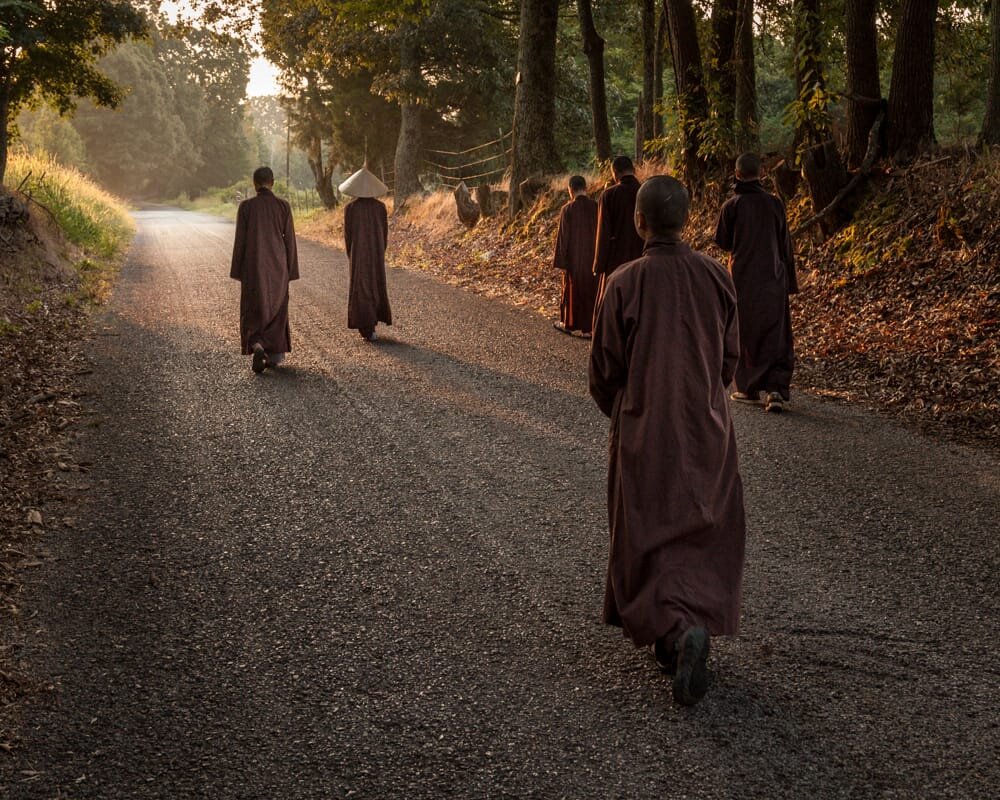A Concise Guide to Walking Meditation
from Centering Prayer for Everyone
Walking meditation is often used as a way of stretching and refreshing the body, providing a break between periods of sitting in centering prayer, but it is an important practice in and of itself. As a dynamic practice it can help us to learn to bring our prayer into action and create a transition from our sitting practice to our everyday life.
Instructions for Walking Meditation
Place your hands in a comfortable position, perhaps hanging at your sides or lightly clasped at your waist. Begin to walk at a slower pace than usual, paying attention to your body and particularly your feet. Notice the sensation of lifting each foot and placing it back on the floor. Feel each step fully. If your mind begins to wander, bring it gently back to the sensations in your body, the feeling of moving through space, the feeling of the soles of your feet touch- ing and leaving the floor.
In order to maintain awareness of your body, it can be helpful to maintain a stately posture, like a king or queen, not stiff but alert and graceful.
The great master of walking meditation, the Vietnamese monk and peace activist Thich Nhat Hanh, tells us that “we can arrive in the present moment with every step” and expresses the power of walking meditation in this passage from his book How to Walk:
When I go to the airport, I like to arrive early so that I can do walking meditation before the flight. About thirty years ago I was walking in the Honolulu airport. Someone came up to me and asked, “Who are you; what is your spiritual tradition?” I said, “Why do you ask?” And he said, “Because I see that the way that you walk is so different than the way others walk. It’s so peaceful and relaxed.” He had approached me simply because of the way I walked. I hadn’t given a speech or a conference. With every step you make, you can create peace within yourself and give joy to other people.
Walking meditation is often carried out in a circle around the outside of the chairs or cushions where the meditators have been sitting and can also be carried out outdoors. If you do not have room for walking meditation, you can invite the group to stand up and do a short, mindful stretch in between sitting sessions. You can also make clear in your instructions that no one is required to do walking meditation, especially since people with physical limitations are sometimes not able to do so.
At our church group in between two twenty-minute periods of centering prayer we process down a side aisle and up the center aisle towards the cross. I always enjoy the stately feeling of processing silently in the beautiful church space.
When doing walking meditation in your home, the main thing is the mindful quality of the walking rather than the length of the walk. You might walk back and forth in a hallway or in a very small circle. Be sure to choose a flat surface where there is no danger of tripping and banging into furniture.

